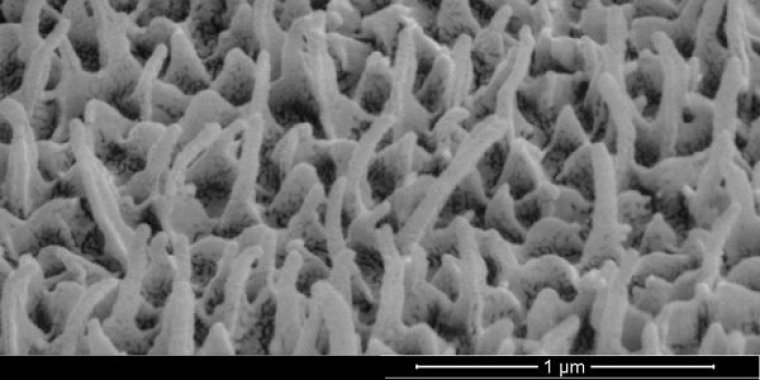| News / Tech News |
Nanopillars help orthopaedic implants resist infection
Inspired by insect wings that kill bacteria on contact, Indian researchers have developed a method to treat the surface of titanium orthopaedic implants at nano-scales so that they resist bacterial infection — a complication that often develops following surgery.

Scanning electron micrograph shows the random nanopillars on a glasswing butterfly wing. ![]()
The researchers from the Indian Institute of Science (IISc), Bangalore used chlorine to drill ultra-small holes into the surface of titanium to produce ‘nanopillars’ that mechanically stretch and rupture bacterial membranes.
This is similar to the way bacteria are killed by the surface structure of the wings of the insect cicada.
The chlorine-based ‘reactive ion’ etching process to create nanopillars causes the normally shiny surface of the titanium to turn black. This black titanium while being bactericidal does not compromise eukaryotic cell attachment which is important for the integration of the implant with bones and tissues. The method shows promise in engineering next-generation biomaterials for orthopaedic implants, according to the study.
The method could also work for dental implants and cardiovascular stents, though such applications “remain untested”.
The next step is to test the performance of the new surfaces on living animals. (SciDev.Net)
YOU MAY ALSO LIKE




